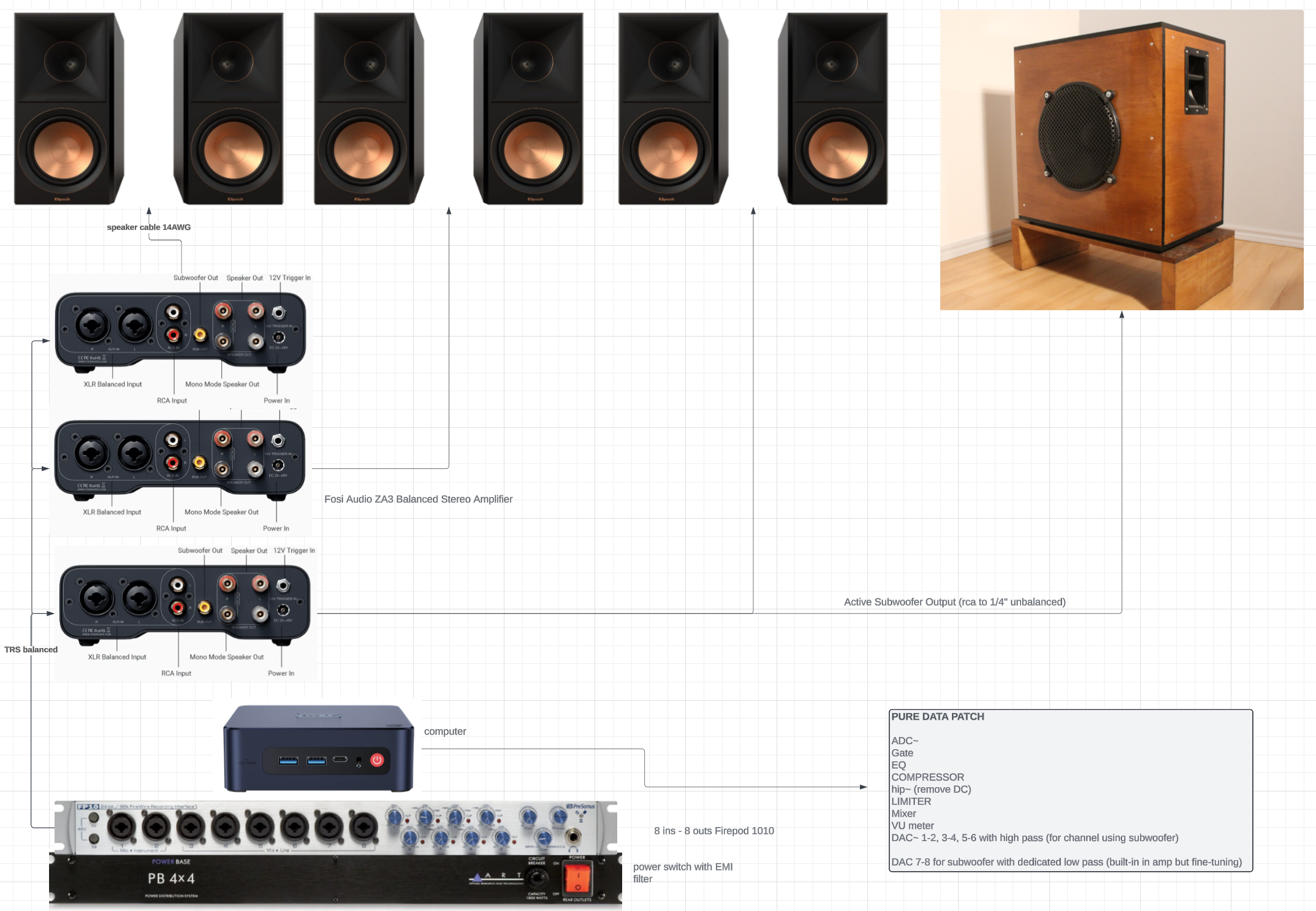@EEight My mixer was for in-ear live on stage, the musicians using TouchOSC to control their earphones. So everything was mono. You are welcome to try it of course, and change it as you need. But although there was input and output eq there were no effects. It might be useful though for you to have Wi-Fi control while you are setting up.
I think you will find what you need (mostly) in Automatism..... all the eq and effect modules..... but I haven't seen an automatic room flattener. It is easy enough by ear though using a sweep generator.... sweep-explained.zip or easier still by humming, singing, whistling and "tssss'ing" with a microphone. You will hear the room resonance sing out at the frequencies you need to cut, and it's better than using pink noise as a source. You get the inaccuracies of the speakers at the same time.
You will have to spend some time setting up though. The real problem eq'ing a room is the comb filtering at lower frequencies.... much worse than the room or the speaker response because you can hear a note loud and then take one step and you can't hear it at all. The more speakers you have the worse it will be, and speaker placement is the most important factor. Really you need a room with very little reflective surface and the public should be listening to only one speaker wherever they are. It's ok'ish in a home cinema because you sit in one place and delays can be set to adjust the relative timing between speakers, but you will have noticed that public cinemas have soft furniture and each sound comes pretty much from one speaker as delays don't work for an audience sitting everywhere in the room.
It's probably worth at least slowing down the sweep, or having manual control, as it takes time for the room to get humming sometimes.
The vocal method works really well..... like when you are humming in the shower..... you really hear those room resonances coming back strong....
David.






